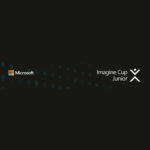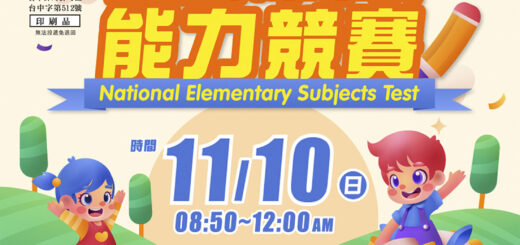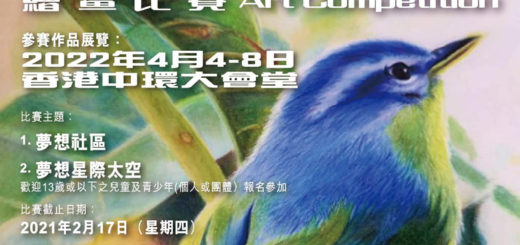
活動簡介
Now in its fourth year, Imagine Cup Junior is an exciting opportunity for students aged 13-18 years old to learn about technology and how it can be used to solve some of the world’s biggest challenges, while participating in a global student challenge. It’s a great introduction to technologies such as artificial intelligence (AI), machine learning, and cybersecurity, and is suitable for all levels, especially beginners.
今年是 Imagine Cup Junior 的第四個年頭,它為 13-18 歲的學生提供了一個激動人心的機會,讓他們在參與全球學生挑戰賽的同時了解技術以及如何利用技術解決世界上一些最大的挑戰。它很好地介紹了人工智能 (AI)、機器學習和網絡安全等技術,適合所有級別,尤其是初學者。
活動主題
Students work in teams of one (1) to six (6) to develop an original concept addressing Microsoft’s AI for Good Initiatives and complete the Imagine Cup Junior PowerPoint submission template.
學生以一 (1) 到六 (6) 人為一組,開發一個解決 Microsoft AI for Good 計劃的原創概念,並完成 Imagine Cup Junior PowerPoint 提交模板。
參賽資格
The Contest is a closed promotion open only to Teams that meet the following criteria:
Teams: Each Team must be comprised of one (1) Team Leader (as defined below) and a minimum of one (1) and a maximum of six (6) Team Members. Only one (1) Entry per Team may be submitted for judging in the Contest; we will accept no more than one (1) Entry per Team.
Team Leaders: Each Team leader (the “Team Leader”) must be, as of January 1, 2023, eighteen (18) years of age or older and a legal resident of a country, region or state listed in Appendix 1. One (1) Team Leader may lead multiple Teams.
Team Members: Each student member of a Team (“Team Member”) must be, as of January 1, 2023, between thirteen (13) and eighteen (18) years of age and a legal resident of a country, region, or state listed in Appendix 1. Each Team Member may only be a member of one (1) Team.
Notwithstanding anything to the contrary in these Rules, neither persons involved in the execution or administration of the Contest nor any of their family members (parents, children, siblings, spouses/domestic partners or individuals residing in the same household as any such persons) are eligible to participate in the Contest. The Contest is void in and for the permanent residents of Cuba, Iran, North Korea, Russia, Sudan, Syria,Region of Crimea and other countries or jurisdictions where prohibited by law.
比賽是封閉式促銷活動,僅對滿足以下條件的團隊開放:
團隊:每個團隊必須由一 (1) 名團隊負責人(定義見下文)和至少一 (1) 名最多六 (6) 名團隊成員組成。 每支隊伍只能提交一 (1) 個參賽作品用於比賽評審; 每個團隊最多接受一 (1) 個參賽作品。
團隊負責人:截至 2023 年 1 月 1 日,每位團隊負責人(“團隊負責人”)必須年滿十八 (18) 歲,並且是附錄 1 中所列國家、地區或州的合法居民。一( 1) Team Leader 可以帶領多個Team。
團隊成員:截至 2023 年 1 月 1 日,團隊的每位學生成員(“團隊成員”)必須年滿十三 (13) 至十八 (18) 歲,並且是某個國家、地區或州的合法居民 列於附錄 1。每個團隊成員只能是一 (1) 個團隊的成員。
儘管本規則有任何相反規定,參與比賽執行或管理的人員或其任何家庭成員(父母、子女、兄弟姐妹、配偶/同居伴侶或與任何此類人員同住的個人)均不得 有資格參加比賽。 對於古巴、伊朗、朝鮮、俄羅斯、蘇丹、敘利亞、克里米亞地區和其他法律禁止的國家或司法管轄區的永久居民,本次比賽無效。
活動時程
Registration for Imagine Cup Junior opened on January 11, 2023. Team Leaders must submit projects on behalf of their student teams before the submission deadline, May 10th 2023.
We are excited to see the ideas students come up with! The top 10 global submission winners will be announced June 7th 2023 via the Microsoft Education blog.
Imagine Cup Junior 的註冊於 2023 年 1 月 11 日開始。團隊負責人必須在提交截止日期 2023 年 5 月 10 日之前代表其學生團隊提交項目。
我們很高興看到學生提出的想法! 全球提交的前 10 名獲獎者將於 2023 年 6 月 7 日通過 Microsoft 教育博客公佈。
報名方式
Entries that do not comply with each of the following requirements are ineligible for and will not be judged in the Contest:
PowerPoint Presentation: Each Entry must include a PowerPoint presentation of no more than ten (10) slides that uses the template provided to each Team Leader and includes:
A title page/title slide and table of contents;
A link to the Team’s Video (defined below);
A short description of the character and magnitude of the Problem;
A description of the Team’s research process including, without limitation, details of any interviews or other research conducted by the Team;
A list of resources used by the Team to aid the Team Members in their understanding of the Problem and development of the Solution;
A description of the ethics of the Team’s Solution that takes the following principles into consideration:
Fairness;
Reliability and safety;
Privacy;
Inclusiveness;
Transparency;
Accountability; and
Cybersecurity; and
A description of the Solution, including how the Team developed it, how it engages with and addresses the Problem, why it is needed; and how it uses AI (i.e., what form the Solution takes and how it effectively leverages AI to engage the Problem).
Concept: Each Entry must include a Concept that falls into at least one (1) of the following “AI for Good” categories as further described on the AI for Good program website:
AI for Earth;
AI for Humanitarian Action;
AI for Accessibility;
AI for Cultural Heritage; or
AI for Health.
Solution: Each Entry must include a Solution that addresses the applicable “AI for Good” Concept. By way of example, Solutions that (a) constitute a new solution or service that might lead to solving or addressing the Problem, (b) improve an existing solution or service in a way that might lead to solving or addressing the Problem or (c)communicate a message to an authentic audience responsible for addressing the Problem or its consequences, are deemed to address the applicable Concept for purposes of the foregoing requirement.
Video: Each Entry must include a video (the “Video”) of no longer than two (2) minutes in duration that pitches the Team’s Entry and:
Includes the Team’s name and country, region or state;
Includes the “AI for Good” category chosen by the Team (AI for: earth, humanitarian action, accessibility, cultural heritage or health);
Includes the Problem the Team intended to solve;
Includes the Team’s Concept; and
Includes the takeaways that the Team Members learned from their involvement in the Contest;
Except for image or audio and video recordings, does not include any additional personally identifying information about any individuals appearing in the Video (e.g. no nametags or mention of “Hi, my name is Rosa.”).
不符合以下各項要求的參賽作品沒有資格參加比賽,也不會在比賽中進行評判:
PowerPoint 演示文稿:每個參賽作品必須包含不超過十 (10) 張幻燈片的 PowerPoint 演示文稿,使用提供給每個團隊負責人的模板,包括:
標題頁/標題幻燈片和目錄;
團隊視頻的鏈接(定義如下);
對問題的性質和嚴重性的簡短描述;
對團隊研究過程的描述,包括但不限於團隊進行的任何訪談或其他研究的詳細信息;
團隊使用的資源列表,以幫助團隊成員理解問題和開發解決方案;
考慮以下原則的團隊解決方案的道德規範描述:
公平;
可靠性和安全性;
隱私;
包容性;
透明度;
問責制;
網絡安全;
解決方案的描述,包括團隊如何開發它、它如何參與和解決問題、為什麼需要它; 以及它如何使用 AI(即,解決方案採用什麼形式以及它如何有效地利用 AI 來解決問題)。
概念:每個參賽作品必須包含一個概念,該概念至少屬於以下“AI for Good”類別中的至少一 (1) 個類別,如 AI for Good 計劃網站上的進一步描述:
地球人工智能;
人道主義行動人工智能;
人工智能輔助功能;
文化遺產人工智能; 或者
健康人工智能。
解決方案:每個參賽作品都必須包含解決適用的“AI for Good”概念的解決方案。 例如,解決方案 (a) 構成可能導致解決或解決問題的新解決方案或服務,(b) 以可能導致解決或解決問題的方式改進現有解決方案或服務,或 (c ) 向負責解決問題或其後果的真實受眾傳達消息,被視為針對上述要求的目的解決適用的概念。
視頻:每個參賽作品必須包含一段時長不超過兩 (2) 分鐘的視頻(“視頻”),用於宣傳團隊的參賽作品和:
包括團隊名稱和國家、地區或州;
包括團隊選擇的“AI for Good”類別(AI 用於:地球、人道主義行動、可及性、文化遺產或健康);
包括團隊打算解決的問題;
包括團隊的概念;
包括團隊成員從參與比賽中學到的收穫;
除圖像或音頻和視頻記錄外,不包含有關視頻中出現的任何個人的任何其他個人身份信息(例如,沒有姓名標籤或提及“嗨,我的名字是羅莎。”)。
評分標準
On or around the close of the Entry Period, a panel of judges will review all eligible Entries received during the Entry Period. The Contest judges will assign points to each eligible Entry based on the criteria below. The assignment of 1, 2 or 3 points to each eligible Entry for each criterion below will be determined in the judges’ sole discretion, and the ten (10) Teams that receive the highest number of points will win the Contest:
在參賽期間或前後,評審團將審查參賽期間收到的所有合格參賽作品。 大賽評委將根據以下標準為每個符合條件的參賽作品打分。 評委將根據以下每項標準自行決定為每個符合條件的參賽作品分配 1、2 或 3 分,獲得最高分的十 (10) 支隊伍將贏得比賽:
Criterion
標準
Low (1 point)
低(1 分)
Medium (2 points)
中等(2 分)
High (3 points)
高(3 分)
Innovation: How original is the Solution?
創新:解決方案的原創性如何?
The Solution lacks innovation. It is already in existence, or is an idea put forward by many student Teams.
解決方案缺乏創新。 它已經存在,或者是許多學生團隊提出的想法。
The Solution shows some innovation. It is an addition to an existing AI approach or shows good creativity.
該解決方案顯示出一些創新。 它是對現有 AI 方法的補充或顯示出良好的創造力。
The Solution is exceptionally innovative. It is either completely new or represents an exciting update on an existing AI approach
該解決方案極具創新性。 它要麼是全新的,要麼代表了對現有 AI 方法的激動人心的更新
Artificial Intelligence: How strong is the Solution? How has the Solution leveraged Microsoft API tools?
人工智能:解決方案有多強大? 該解決方案如何利用 Microsoft API 工具?
The Solution may be an example of technology but does not have elements of AI in it.
解決方案可能是技術的一個例子,但其中沒有人工智能的元素。
The Solution draws on the broader Microsoft Cognitive Services.
該解決方案利用了更廣泛的 Microsoft 認知服務。
The Solution goes deeper to intelligently draw on APIs that sit under the Microsoft Cognitive Services.
該解決方案更深入地智能利用 Microsoft 認知服務下的 API。
Impact: What is the potential quantitative and qualitative global impact of the Solution within the selected “AI for Good” category?
影響:解決方案在選定的“AI for Good”類別中的潛在定量和定性全球影響是什麼?
The Solution’s potential for good is not high.
解決方案的潛在好處並不高。
The Solution has potential to make an impact in one of Microsoft’s “AI for Good” categories.
該解決方案有可能對微軟的“AI for Good”類別之一產生影響。
The Solution has enormous potential to make an impact in one of Microsoft’s “AI for Good” categories.
該解決方案具有巨大的潛力,可以對 Microsoft 的“AI for Good”類別之一產生影響。
Creativity: How creatively was the Solution presented?
創造力:解決方案的創造性如何?
The Team presented the Solution in a basic manner using the PowerPoint template.
該團隊使用 PowerPoint 模板以基本方式展示了解決方案。
The Team made a good effort to present the Solution creatively using the PowerPoint template.
團隊努力使用 PowerPoint 模板創造性地展示解決方案
The Team was exceptionally creative in how it presented the Solution using the PowerPoint template, and the Team used drawings, simulations, videos or other formats to support their submission.
該團隊在如何使用 PowerPoint 模板展示解決方案方面非常有創意,並且該團隊使用繪圖、模擬、視頻或其他格式來支持他們的提交。
Ethics: How well does the Solution meet the Microsoft AI principles of fairness, inclusiveness, reliability and safety, privacy and security, transparency and accountability?
道德規範:該解決方案在多大程度上符合 Microsoft AI 的公平性、包容性、可靠性和安全性、隱私和安全性、透明度和問責制原則?
The Team did not engage with the Microsoft AI principles to explain the Solution.
該團隊沒有使用 Microsoft AI 原則來解釋解決方案。
The Team made a good effort to align the Solution with the Microsoft AI principles.
該團隊努力使解決方案與 Microsoft AI 原則保持一致。
The Team had a strong alignment with Microsoft’s AI principles and had a strong understanding of the cybersecurity considerations of the Solution.
該團隊與微軟的 AI 原則高度一致,並且對該解決方案的網絡安全考慮因素有深刻的理解。
Cybersecurity: How well has the Entry accounted for cybersecurity? Is the Solution cyber safe?
網絡安全:條目對網絡安全的解釋情況如何? 解決方案網絡安全嗎?
The Team did not consider the cybersecurity risk of the Solution.
該團隊未考慮解決方案的網絡安全風險。
The Team made a good effort to reduce the cybersecurity risk of the Solution.
團隊努力降低解決方案的網絡安全風險。
The Team demonstrated good knowledge and creativity to reduce the cybersecurity risk of the Solution.
該團隊展示了良好的知識和創造力,可以降低解決方案的網絡安全風險。
活動獎勵
The following prizes will be awarded to Team Leaders of the winning Teams:Various merchandise items and a trophy which, all together, will not exceed the value of $300 per Team Member in a group of no more than six (6) Team Members.
以下獎品將頒發給獲勝團隊的團隊負責人:各種商品和獎杯,在不超過六 (6) 名團隊成員的團隊中,每位團隊成員的總價值不超過 300 美元。
聯絡方式
主辦單位:Microsoft Imagine Cup
聯絡人:Microsoft Imagine Cup
聯絡人信箱:studentdevteam@outlook.com
比賽網站 : https://imaginecup.microsoft.com/en-us/junior





